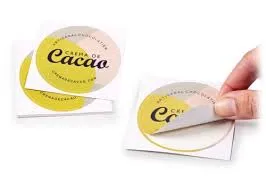Exploring the Art of Printed Foil A Gleaming Addition to Modern Design
In the realm of modern design, printed foil has emerged as an innovative and striking technique that adds a layer of sophistication and vibrancy to various mediums. Whether it is used in packaging, stationery, or marketing materials, the allure of printed foil can transform ordinary pieces into eye-catching works of art. This article delves into the applications, benefits, and future of printed foil, showcasing why it is becoming increasingly popular in design circles.
Printed foil is essentially a process that involves the application of a thin layer of metallic foil onto a substrate, which can include paper, cardboard, and even plastics. This technique is typically achieved through hot stamping, where heat and pressure are used to transfer the foil onto the desired surface, resulting in a shiny, reflective finish. The most common colors used in printed foil are gold and silver, but a variety of shades and finishes, including holographic and matte, are also available, enriching the creative possibilities for designers.
One of the primary benefits of printed foil is its ability to create a luxurious impression. In a world where first impressions are vital, brands strive to stand out on crowded shelves. Packaging adorned with printed foil not only captures attention but also communicates quality and premium value to consumers. This technique is particularly popular in the cosmetics and luxury goods industries, where packaging is often seen as an extension of the product itself.
printed foil

Moreover, printed foil can enhance the tactile experience of a product. The combination of visually striking metallics and textured finishes invites consumers to engage with the product physically, making it more memorable. This sensory interaction can foster a deeper emotional connection with the brand, encouraging repeat purchases and customer loyalty.
In addition to aesthetics, printed foil is also a versatile tool for branding and marketing. It can be used to highlight specific elements such as logos, taglines, and key features, making them pop against the surrounding design. This not only enhances visual appeal but also guides the viewer’s eye to important information, making marketing materials more effective.
As technology advances, the future of printed foil looks promising. Innovations in eco-friendly foils and printing techniques are emerging, allowing brands to achieve glamorous effects while minimizing their environmental impact. Additionally, advancements in digital printing technology are making it easier and more cost-effective to incorporate foil into smaller print runs, enabling even small businesses to leverage this technique without breaking the bank.
In conclusion, printed foil is more than just a decorative element; it is a powerful design tool that enhances branding, creates memorable experiences, and adds a touch of luxury. As designers continue to explore creative applications and sustainable practices, the use of printed foil is set to flourish, shining brightly in the ever-evolving landscape of modern design. Whether in packaging, branding, or stationery, the environmental and aesthetic benefits of printed foil will undoubtedly continue to captivate the industry for years to come.



